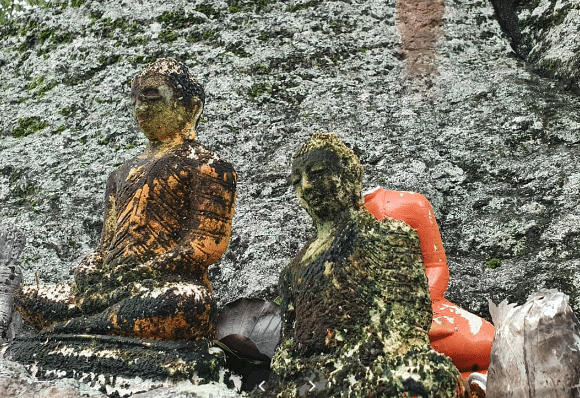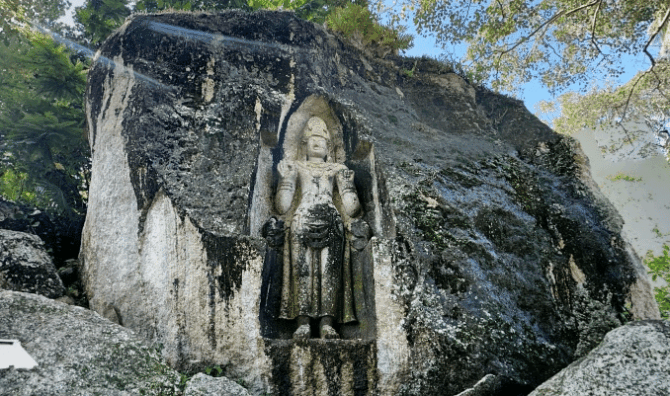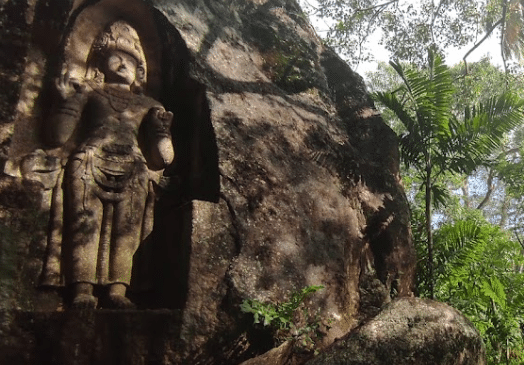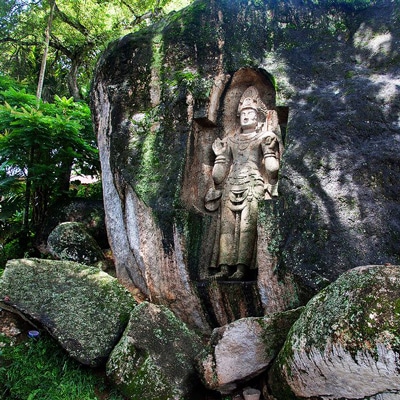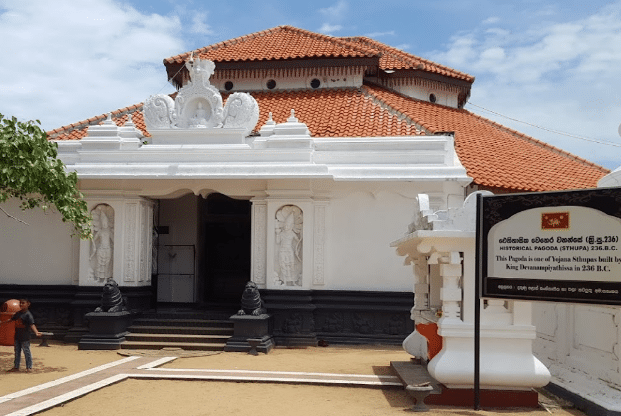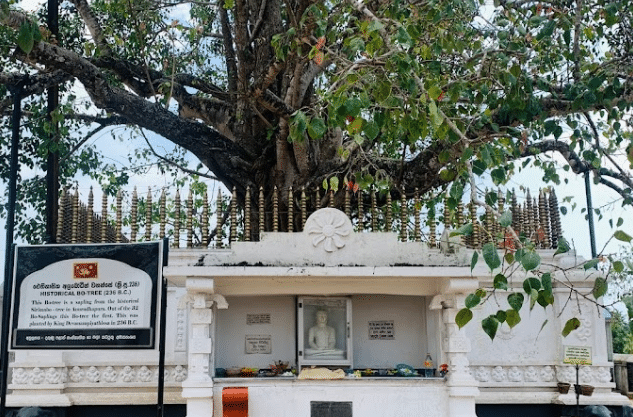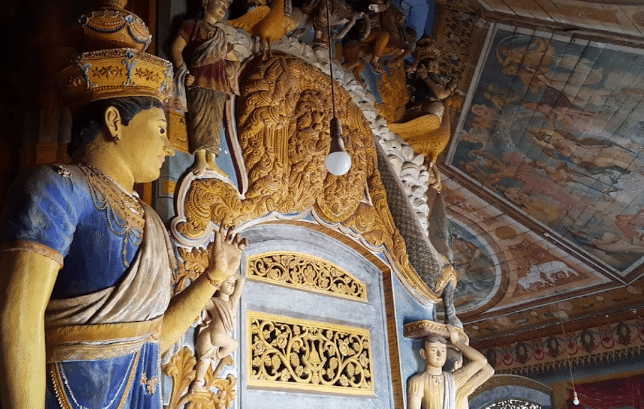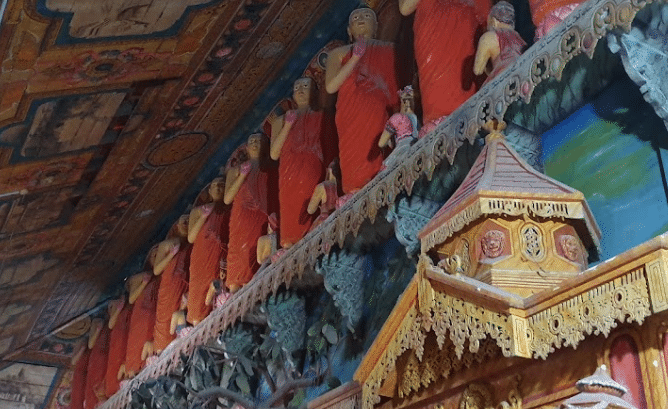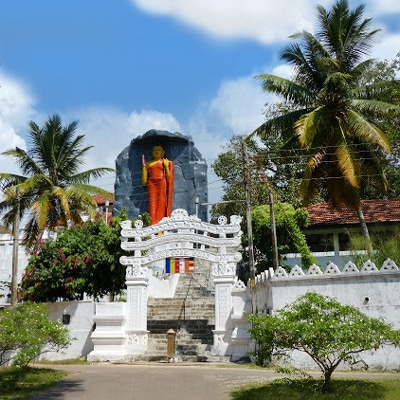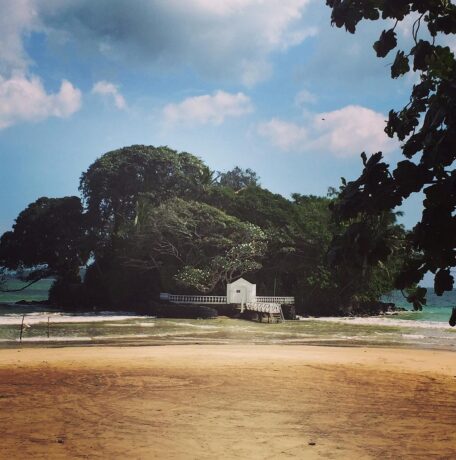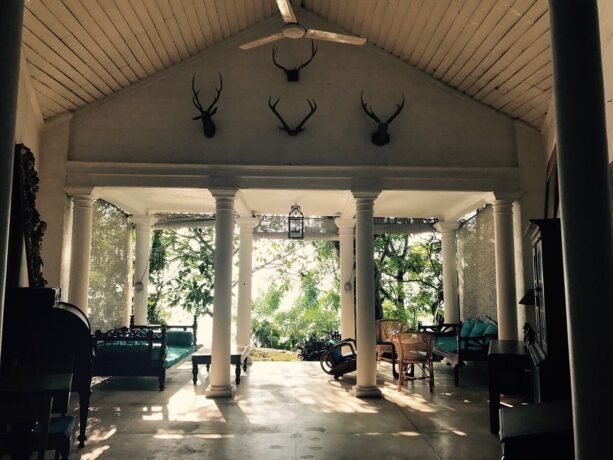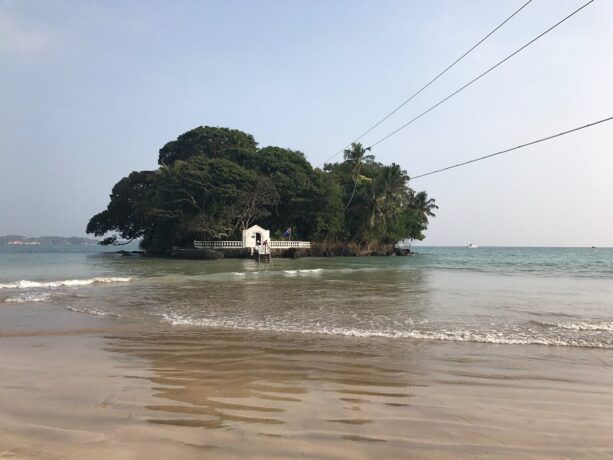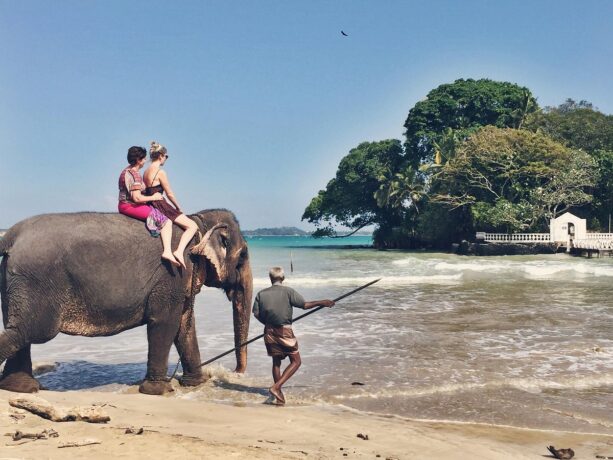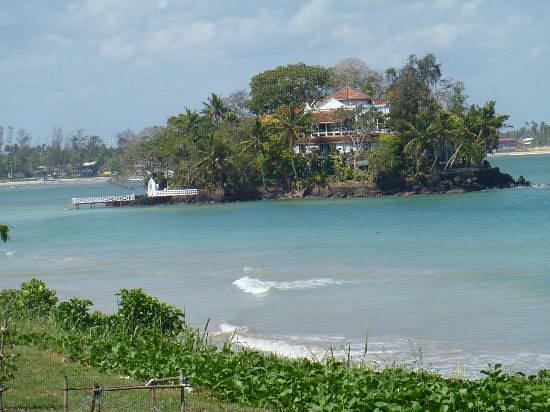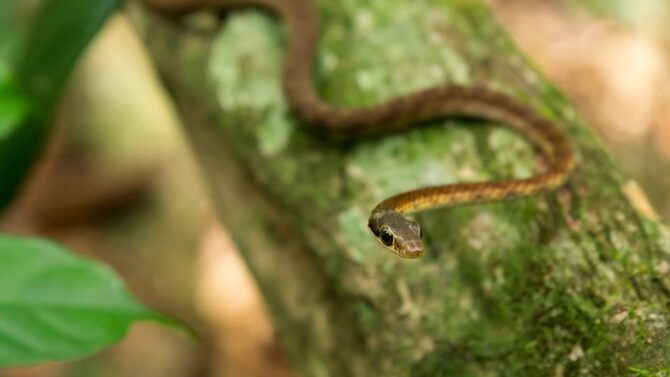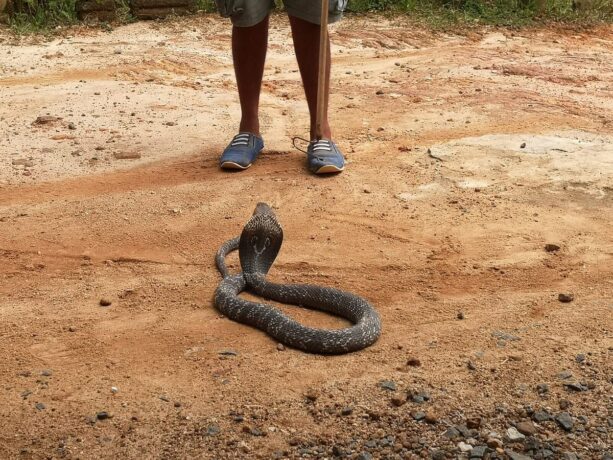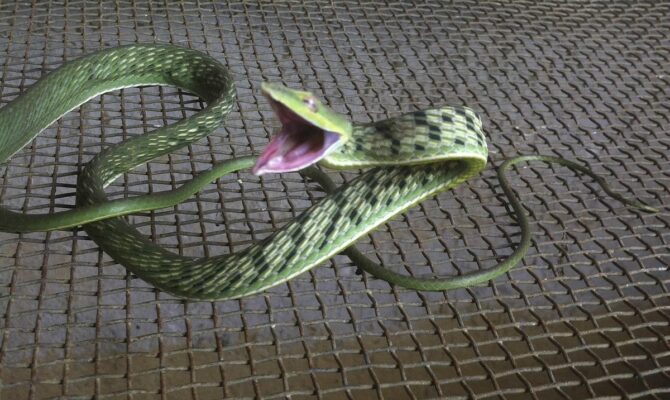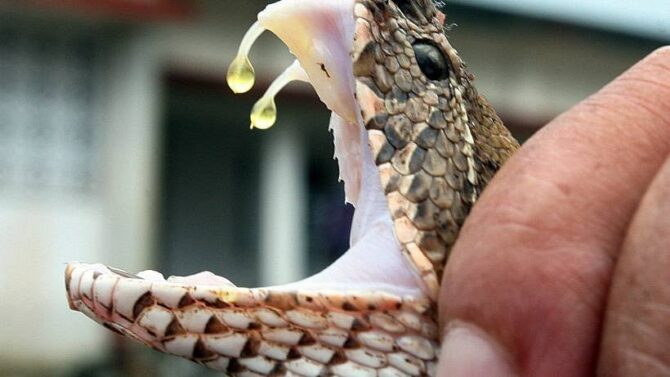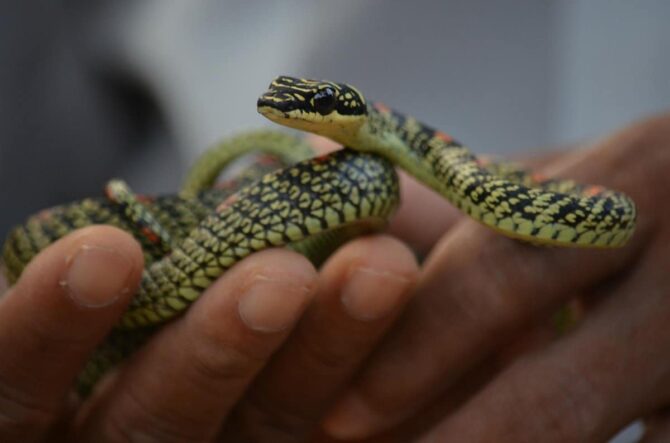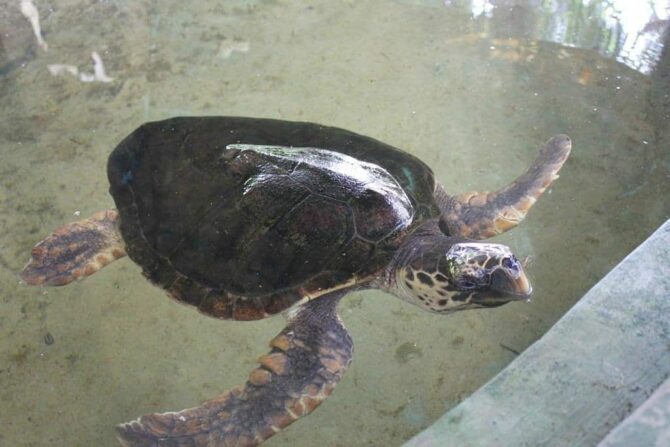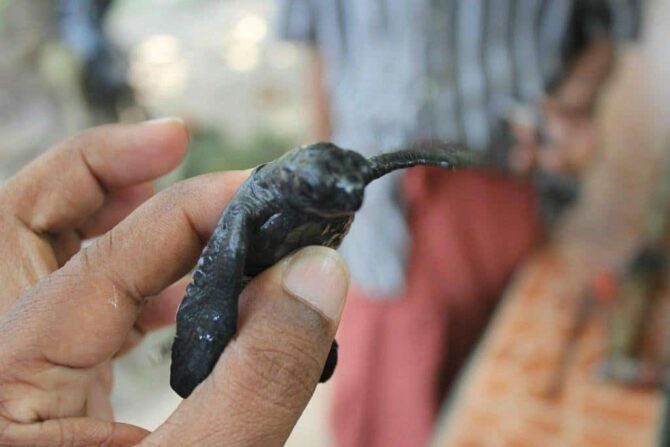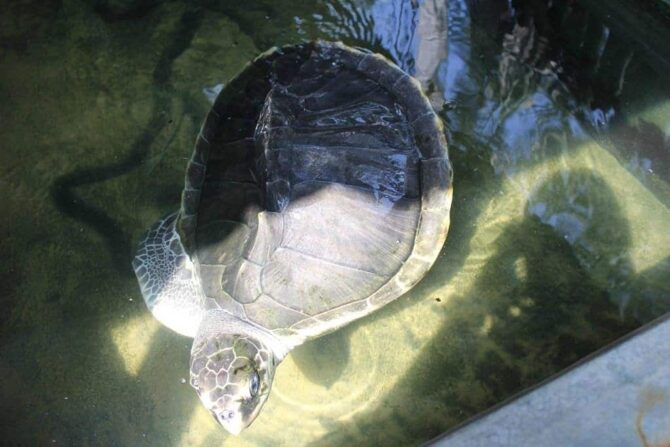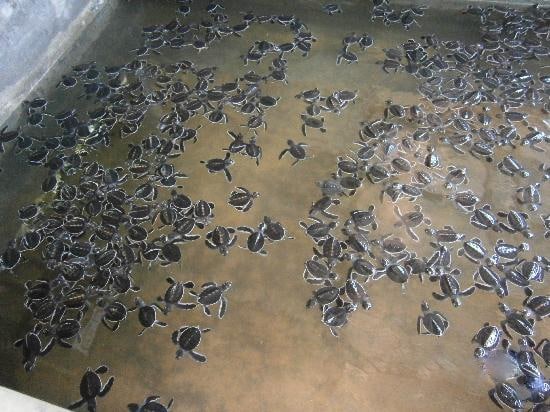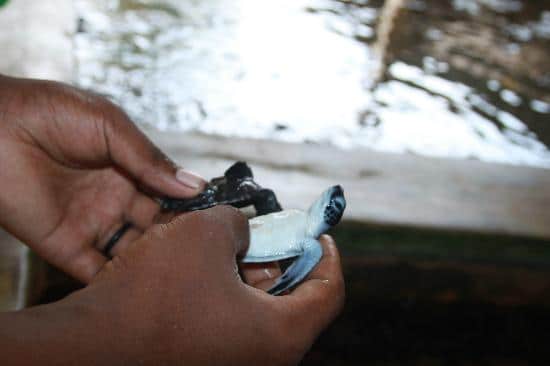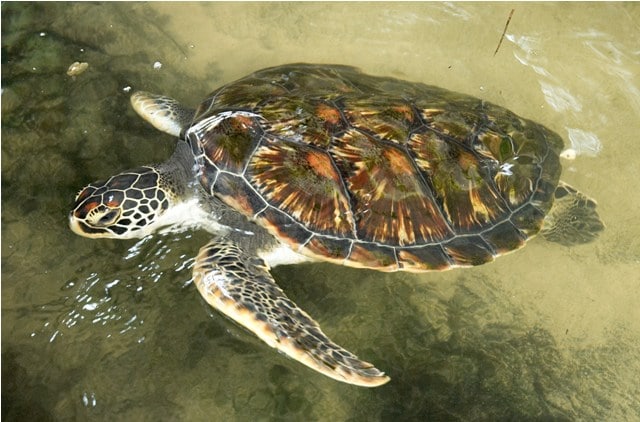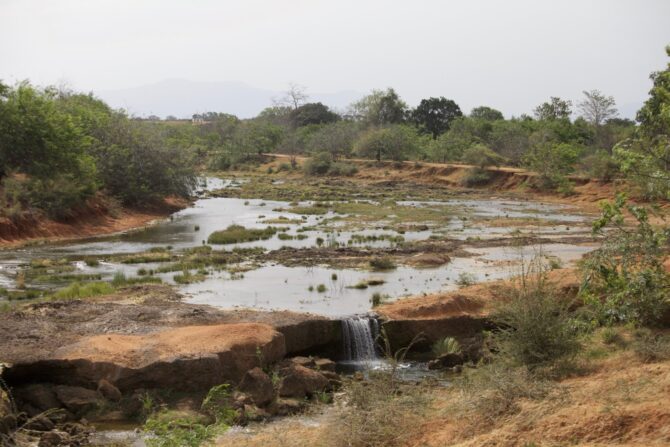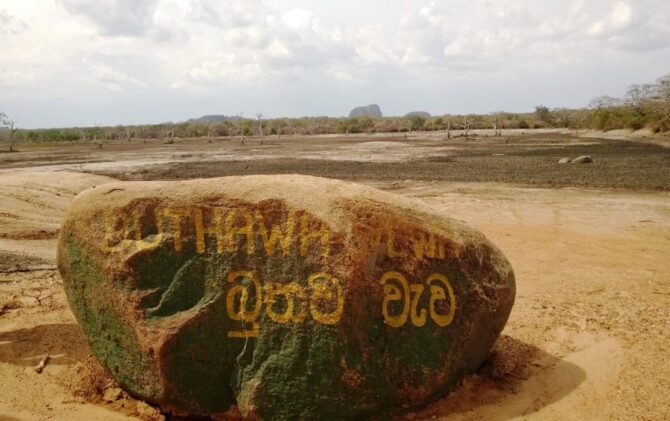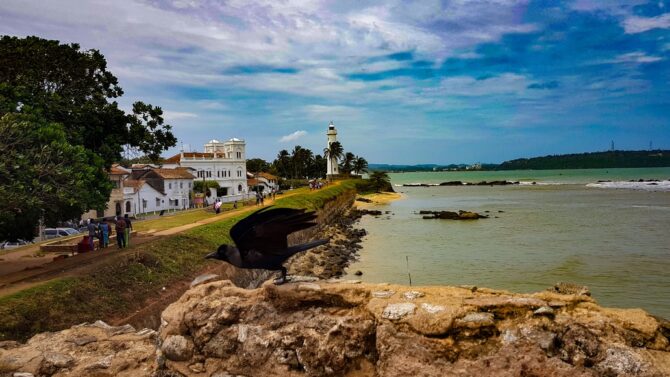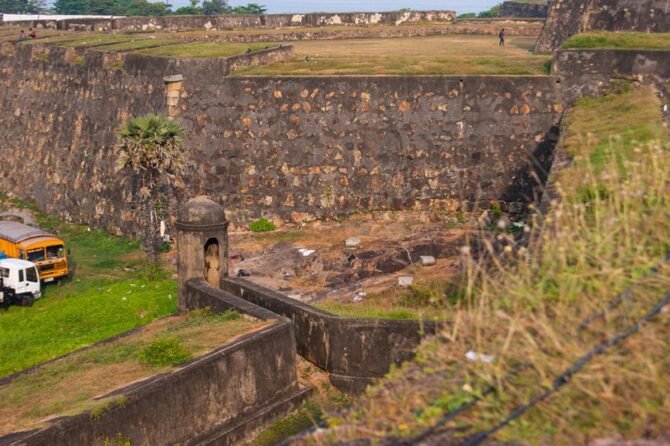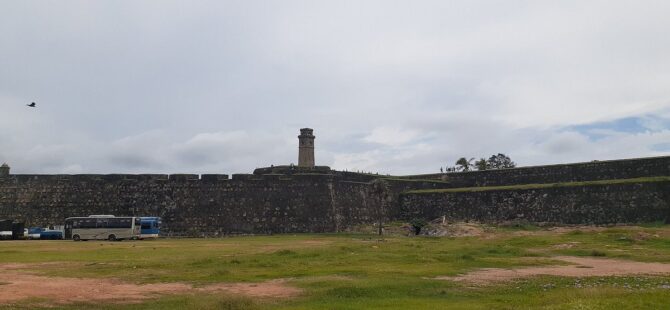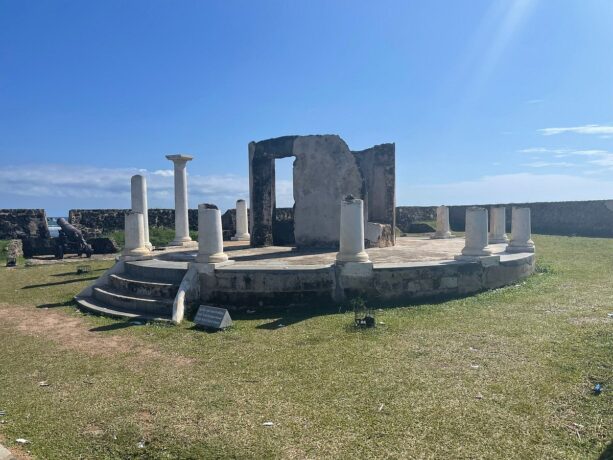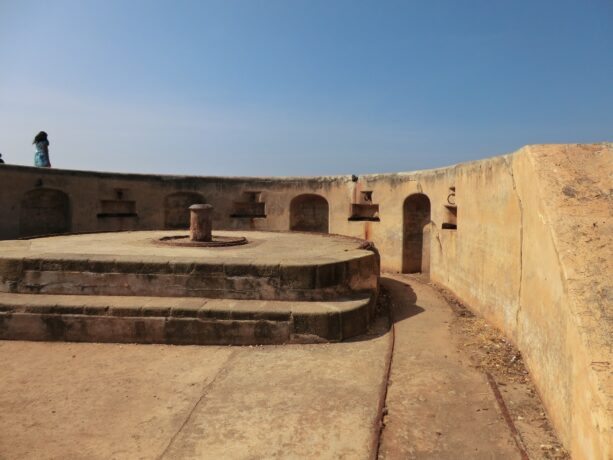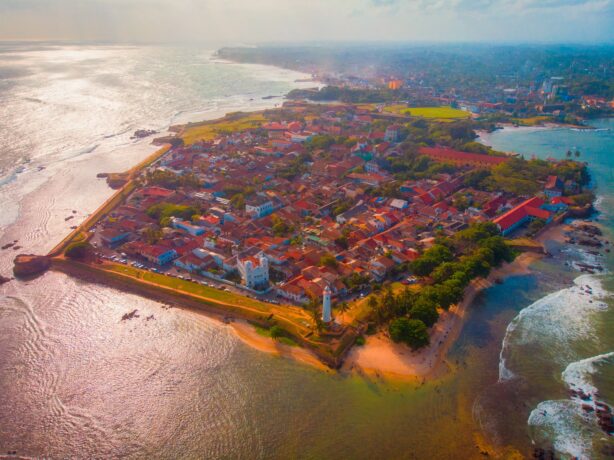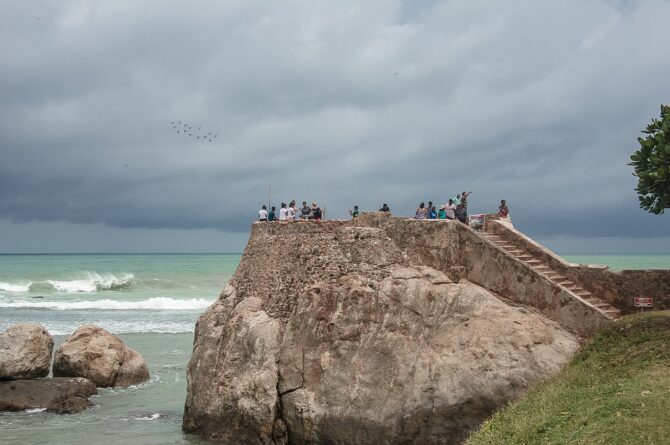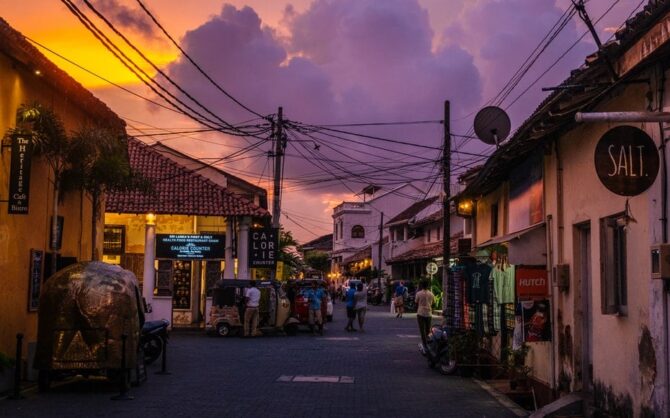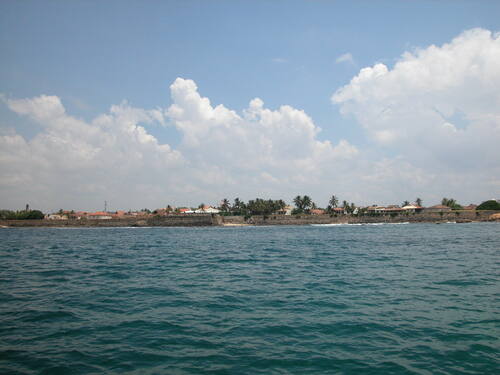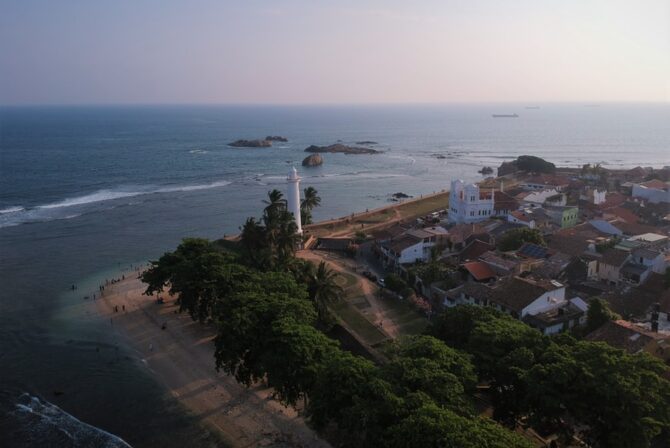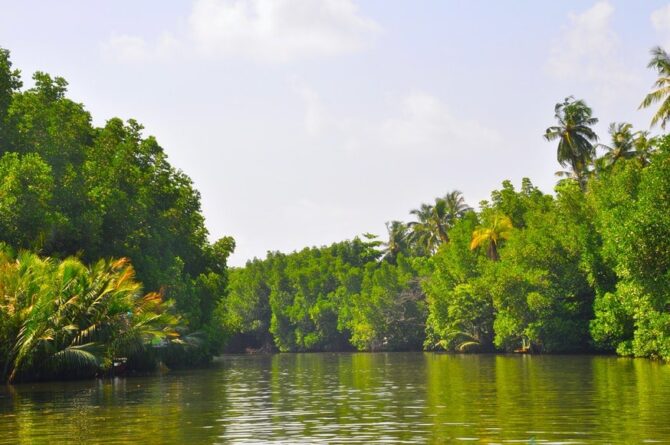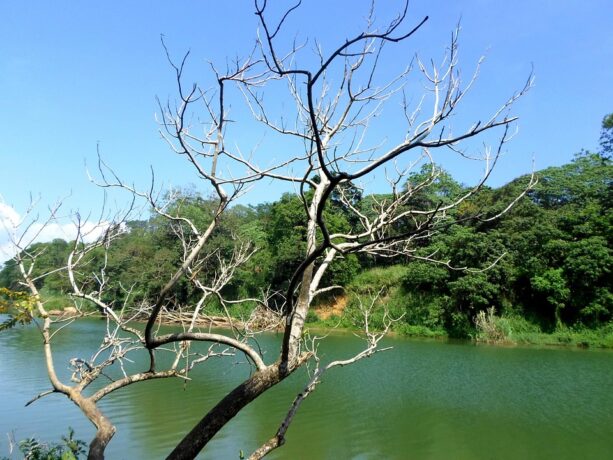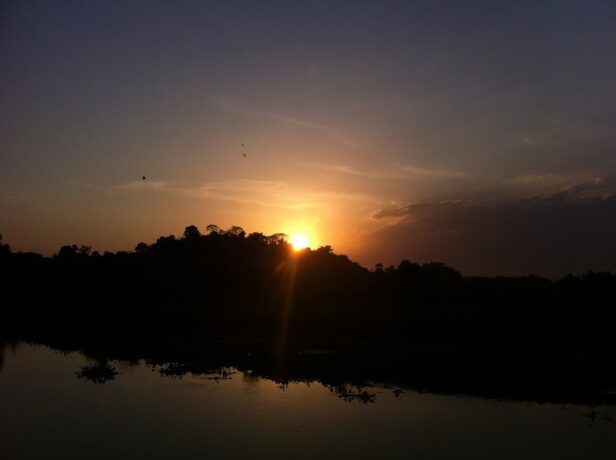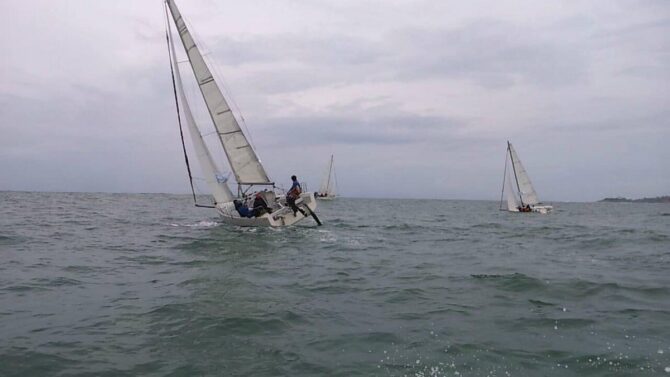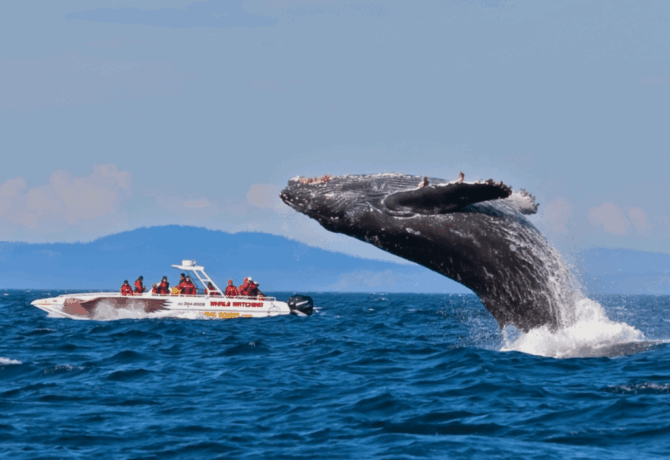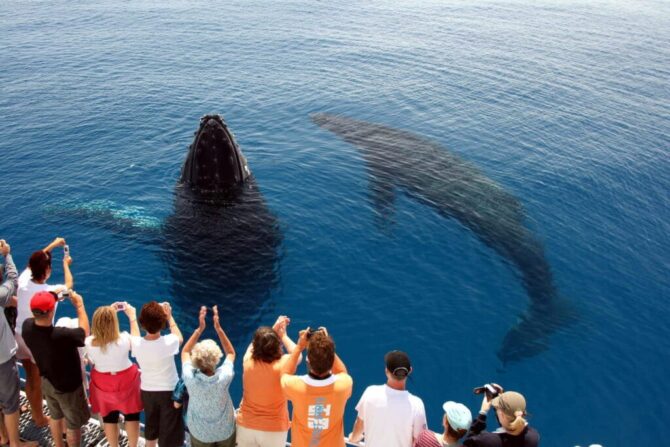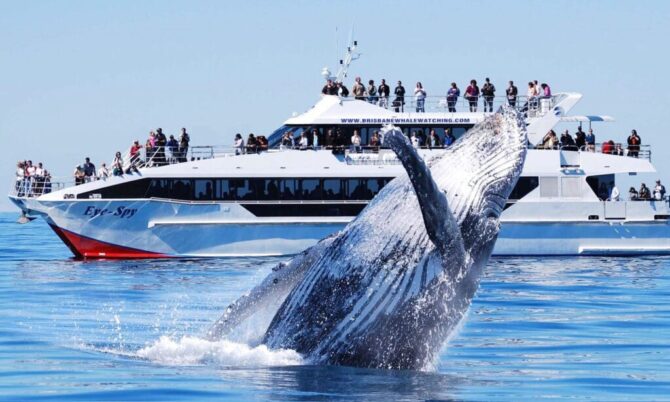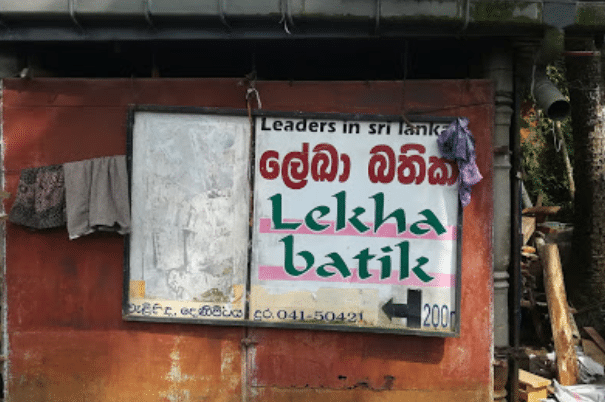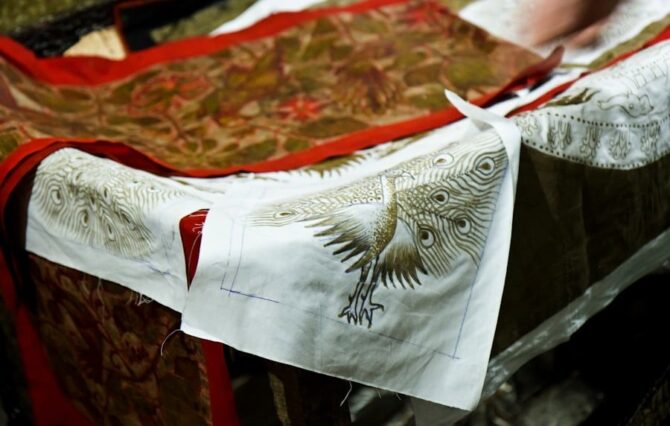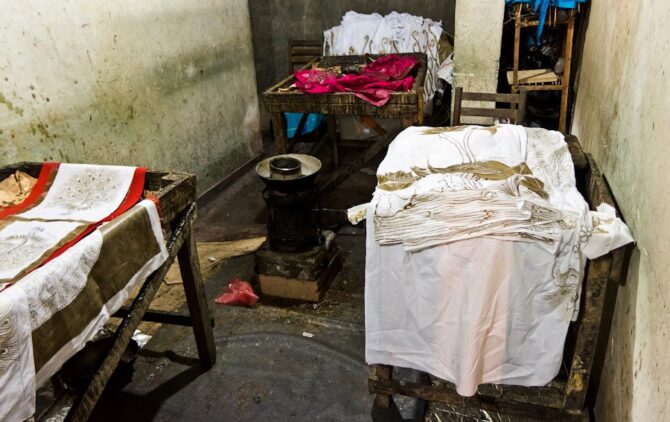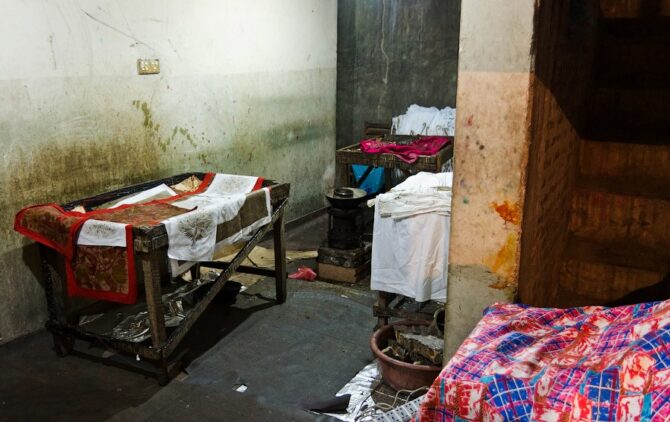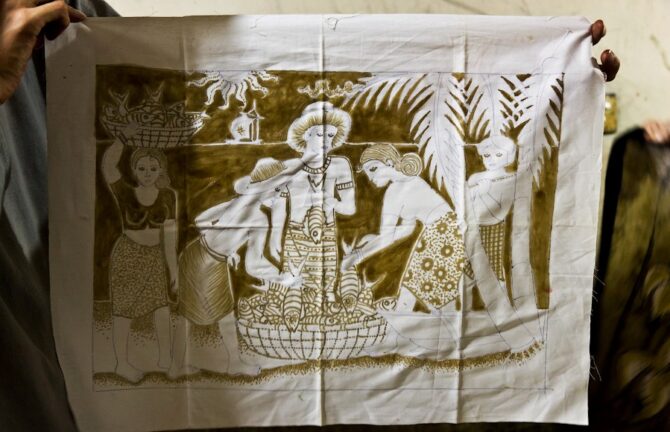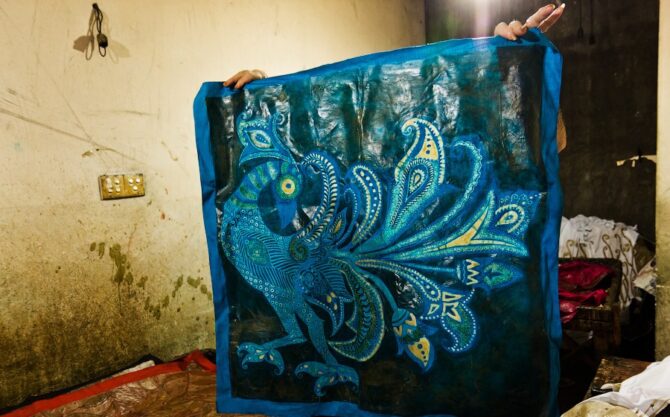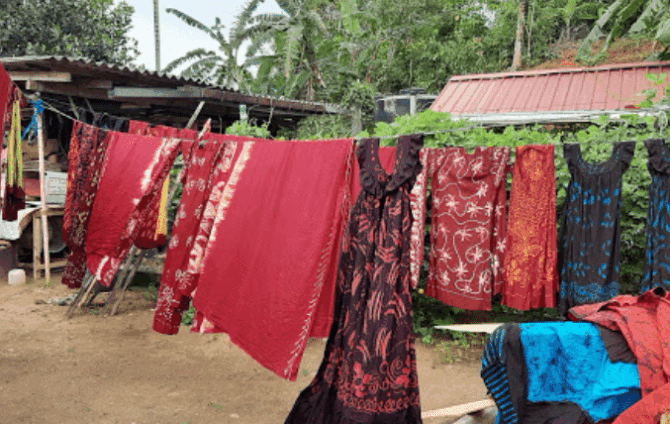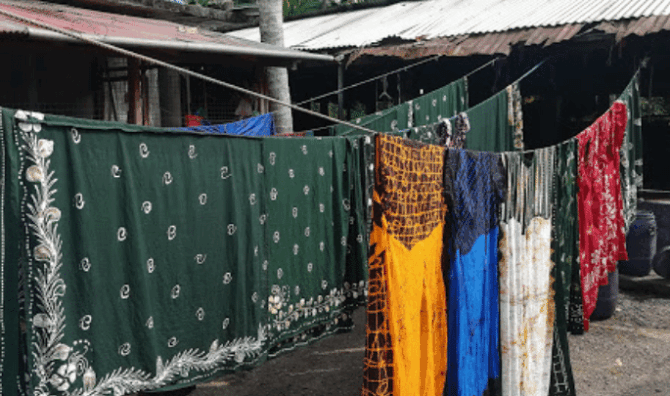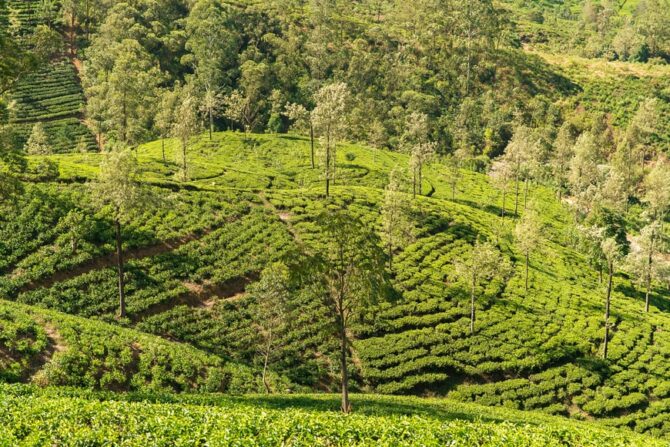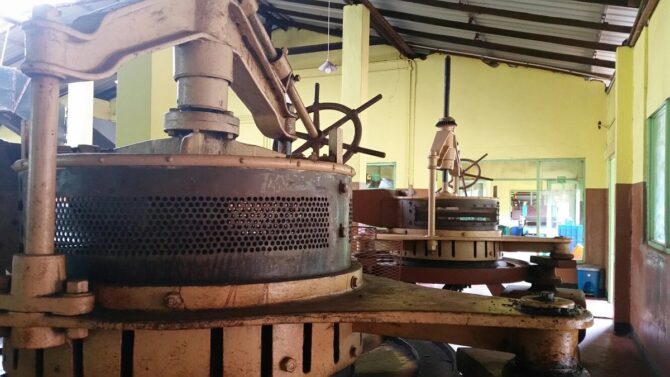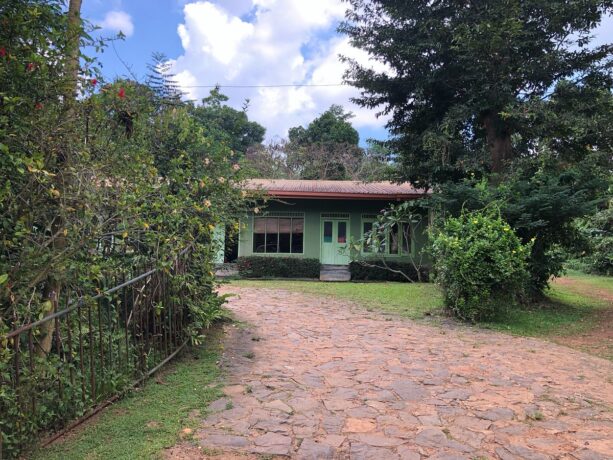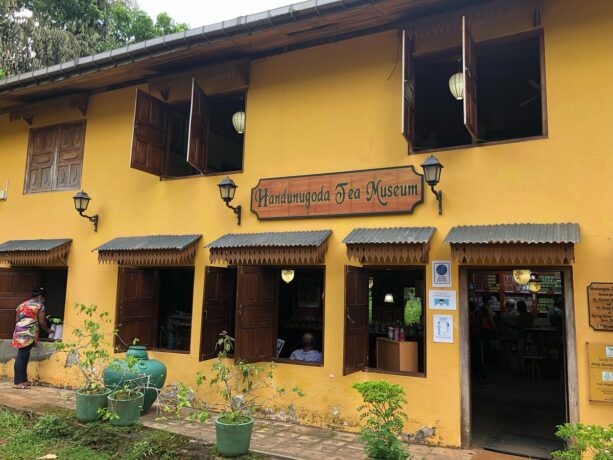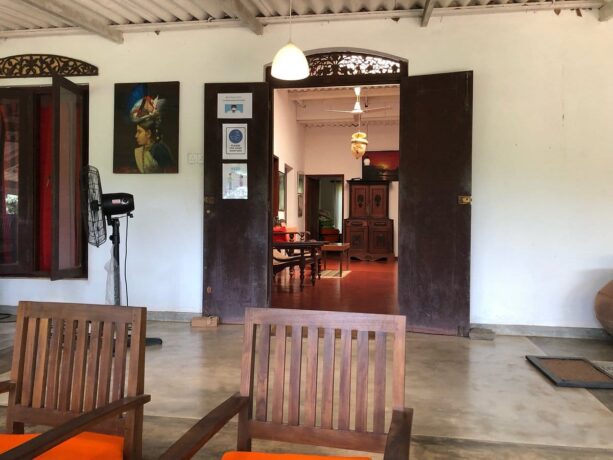The popular resort of Sri Lanka, Weligama, is located on the shores of a cozy sandy bay. It is a popular surfing spot. The season lasts from October to April, but fans of water sports pay little attention to safety rules and come here to catch a wave at any time of the year. Weligama hotels welcome guests from all over the world, provide them with the friendliest welcome and provide excellent service. In the village itself and its surroundings there are many interesting sights that you can visit in your free time from surfing.
Attractions Weligama on map
Bas-relief of Kushta Raja Gala
In The Bay of Weligama there is a sacred place where people come for healing. This is a small statue carved into the rock, in the middle of a small cozy square. According to legend, in the 7th or 9th century, the Indian Raja arrived on the island. He suffered from leprosy. A local doctor cured the doomed, for which the eminent guest decided to perpetuate his image. The figure of the doctor was carved into the rock, and soon the locals noticed that the place has miraculous power. Everyone who visits it is cured of any disease.
This healer was none other than Avalokiteshvara (the Buddhist bodhisattva of compassion). This is evidenced by the results of studies conducted by scientists of Sri Lanka. Travelers do not really believe in the miraculous power of the statue, but recommend visiting it. A 10-minute walk from the bas-relief are hotels, including the five-star “Marriott” and several small guest houses. The road passes through a temple standing on a hill. It is also of historical and religious value. In one trip, you can visit two attractions at once.
Sri Agrabodhi Rajamaha Viharaya Temple
Next to the bas-relief of Kushta Raja Gala is a Buddhist temple. Previously, both objects represented a single ensemble, but after the tragic fate that befell the temple, the buildings exist on their own. According to research, Agrabodhi Rajamaha Viharaya was built in the 3rd century BC. It belongs to one of the first Buddhist sanctuaries erected in Sri Lanka. In the 16th century it was destroyed by the Portuguese colonialists. Pilgrims and people suffering from healing continued to come to the bas-relief. The desecrated temple remained empty and abandoned for two centuries.
The restoration of the temple began only at the end of the 18th century in the era of the Kingdom of Kandy. The House of the Image was rebuilt, three Buddha statues were restored, niches for meditation were installed. Before entering, it is necessary to remove shoes so as not to offend the feelings of believers. One of the oldest Bodhi trees on the island grows on the territory. It grew out of a seedling of the holy tree Sri Maha Bodhi, which grows in the religious complex of Anuradhapura.
According to legend, the monks took the shoots from the sacred tree and went on a journey around the island to plant them in holy places. In Weligama, they stopped for the night. When in the morning we decided to set off, it turned out that one of the sprouts was densely rooted in the ground. These were the first seedling to take root. The tree has been growing for more than 2 thousand years.
Address: Kundasale District – Kandy, Weligama, Sri Lanka
Taproban Island
All hotels in Weligama are located on the coast, and only one is on the private island of Taprobane. This is a romantic place where you can relax and plunge into the world of royal luxury. The island with its colonial-style mansion has hosted kings, queens, presidents, prime ministers, aristocracy, writers and eccentric artists since 1920, which gave it a very colorful history.
The island occupies two and a half acres of land. The accommodation includes five bedrooms with en-suite bathrooms, spacious living rooms, balconies, verandas, tropical gardens and a stunning infinity pool. A staff of five satisfies the needs of guests. It is Sri Lanka’s only private island, the No. 1 address in the Indian Ocean. It can be reached by boat or on foot in shallow water, the distance is 200 m.
The highlight of life on Taproban is that every corner of the island offers a unique view of Weligama Bay and the Indian Ocean. Breakfast, lunch, cocktails, dinner and nightly stargazing open up a dizzying array of magnificent views. Whether it’s time for a cocktail, lunch or dinner, staff will make sure that each time of day is memorable and unique.
You can come here to enjoy the beautiful sandy beach, participate in pole fishing, feel like Robinson on a small island in the ocean. The hotel often hosts workshops, seminars and conferences. The event team develops various events.
Snake Farm
For travel enthusiasts, the surroundings of Weligama will become the Klondike of hitherto unexplored adventures. To begin with, it is worth visiting the Snake Farm, which is located 14 km from the resort. You need to go along Akuressa Road inland. The road will pass by rice paddies, near the entrance to the farm there is a sign. Guests are greeted by a snake tamer, who is also a hereditary healer and a connoisseur of medicines made from snake venom. Drugs and antidotes are produced here. This was done by the grandfather, great-grandfather and father of the current owner.
This farm is not so much a landmark of Weligama as of the whole of Sri Lanka. It was visited by prominent political figures and the President of the country himself. Locals trust the drugs made here more than the official medicine and pharmaceuticals. Visitors are allowed to be near snakes, but only accompanied by a farm employee.
Snakes live in specially built houses for them. They contain containers in which the wards live. In total, 15 species of snakes are bred here. In addition to poisonous ones – spectacled cobra, chain viper, Russell’s viper, Indian krait, grassy-green wattle and others – no less frightening multi-meter pythons are bred here. Next to the creeping reptiles in the boxes live scorpions and tarantulas, whose venom is also used for Ayurvedic procedures.
Turtle Farm
More peaceful is the hatchery for breeding sea turtles. Similar farms are scattered throughout the coast. In Sri Lanka, you can not kill turtles, so in restaurants there are no dishes from these reptiles. The turtle farm in the vicinity of Weligama is small in size, but it is a must visit, especially for parents with children. Entrance fee is Rs 500 per person. The country has a single price for visiting turtle farms. All of them work under the state program of nature protection, adopted in 1982, so they do not have the right to raise prices on their own.
The duties of the staff include monitoring the clutch, providing assistance to injured turtles, collecting excavated eggs on other beaches, transferring them to the territory of the hatchery. All the turtles that were born here in 30 years will return to their native harbor to make their own clutches. Hatched babies are monitored for several days. For them, pools are installed, in which kids gain strength before they are released into the open ocean.
Address: Mirissa, Southern Province, Sri Lanka
Yala Park
Back in 1900, the territory of the Yala National Park was declared a protected area. In 1948, it received the status of a natural monument and was taken under full state protection. The park is divided into 5 plots, has a protected area of almost 130,000 hectares, consisting of tropical forests, shrubs, meadows, ponds and lagoons. Two sites are currently open to the public. It is home to 44 species of mammals and 215 species of birds.
Among the magnificent wildlife, archaeologists have found signs of a vanished civilization. The monastic settlement of Situlpavva, an important pilgrimage site, was home to 12,000 residents seeking solace some 2,000 years ago. The restored rock temple is among the surviving ancient sanctuaries of the island. Yala was once home to a thriving civilization dating back to pre-Royal times. At the site of the settlement, a large number of household utensils and huge water tanks were found, to which wild animals come to drink today.
The entrance fee for an adult is $ 15, for a child – $ 8 (payment in rupees at the rate). If there is a desire to stay overnight, you will have to pay twice as much. On the territory of the park, ECO-hotels with a service of category up to 3 stars have been built, there are several campsites.
Address: Uva Region, Southern Province, Sri Lanka
Website: https://www.yalasrilanka.lk/
Galle Fort
The nearest historical sights include Galle Fort. This is the largest tourist site in Sri Lanka, declared a World Heritage Site according to UNESCO. The fortress was built in 1663, when the Portuguese settled here were knocked out by a flotilla of the Dutch. On the site of the Portuguese outpost, the new colonists built a monumental stone fort capable of withstanding defenses from both the ocean and the land. For the next 130 years, Galle was the main administrative center of Sri Lanka. Then the British came to the island and moved the capital to Colombo.
The fort is perfectly preserved. Moreover, it has become a brand for the local hospitality industry. Local hotels try to decorate in the Dutch style, and restaurants are sure to serve European cuisine. Travel from Weligama to Galle by train costs Rs 80 for a seat in a 2nd class carriage and Rs 40 for 3-1 class. With all stops you can drive in 40-50 minutes. The motorway is 40 km away. A bus ticket costs Rs 76. The fort is open around the clock, admission is free, guide services are discussed separately.
Address: Galle, Southern Province, Sri Lanka
City website: http://galle.mc.gov.lk/
Ganga River
You can get acquainted with the surrounding natural world by ordering a safari along the Ganges River. Its mouth is located in the vicinity of Weligama. From here begins a walk along the shores overgrown with mangrove plants, a meeting with their inhabitants – monitor lizards, crocodiles, monkeys. After about a kilometer, the channel begins to expand. On the shores, houses are increasingly found, some of which allow guests.
Artisans live here. They make fishing accessories, souvenirs, toys, cook cinnamon in an artisanal way. Tourists are shown how to weave a roof of palm branches, twist a rope from coconut copra, and at the same time sell dried cinnamon sticks, essential and coconut oil of their own preparation at a similar price.
Further downstream is a small island with a Buddhist stupa. Ancient manuscripts are kept in the temple, there are bush-tailed cats on the island, and the caretakers of the temple will be happy with any donations. The final destination of the trip is a fish farm. Here you can order fish peeling in a special tank with manicurist fish, stroke a crocodile, buy fresh products for dinner.
The duration of the tour is 3 hours, the cost of renting a boat is $ 50-60. It is advisable to find a boat with an awning so as not to be overwhelmed by the sultry rays of the sun, and also remember that the locals love to bargain. Travelers often recall cases when they managed to buy large colorful souvenirs at half price.
Blue Whale Cove
You can watch the migration of blue whales in Sri Lanka from 4 places. The most popular site is located in Mirissa (8 km from Weligama). Whales swim 5-10 km from the shore. To get a better look at the population, tourists are invited to small vessels, mainly pleasure boats with an open upper deck for panoramic viewing. They depart from the marina at 6-7 a.m. It is worth stocking up on sandwiches, since boats do not always feed the dishes promised in the price list, treat you with tea-coffee. There is drinking water on board. The duration of the tour is 5 hours.
The cost hovers around Rs 8,000 per trip per person. This is not cheap, besides, it is not a fact that tourists will necessarily see whales. Ocean safari has long been the main “wiring” among local entrepreneurs. They take advantage of the ignorance of vacationers and pass off any time of the year as the migration season. In order not to waste time and money, it is worth knowing that the migration of whales in the Mirissa area occurs from October to March.
Address: Mirissa Beach, Southern Province, Sri Lanka
Lekha Batik Factory – Welihinda, Weligama
In addition to Ayurveda, cinnamon and coconut oil, the surroundings of Weligama are famous for textile goods. Magnificent batiks are made in the village of Velihinda (12 km from the resort). For their production in ancient times, manual looms were invented. As a decoration of canvases, images of animals, flowers, dancers of the Kingdom of Kandy are used. The Lekha Batik factory supplies its products all over the island. In order to see how real batik is made, participate in master classes and buy a valuable souvenir, it is better to come to Velikinda.
All participants of the excursion are given the opportunity to make their own batik. Under the guidance of the master, the guests of the factory choose a picture, paints, dyeing methods, after applying the pattern, dry, and then correct their own masterpiece. The company starts working on weekdays from 5 am, on Saturday-Sunday from 8 am.
Address: Weligama (take Malimboda-Akurugoda-Welihinda Road), Sri Lanka
Ahangama Tea Plantation
For elite handicraft tea, you should go to the Khandunugoda estate. The tea collection was created exclusively by hand by the owner Herman Gunaratne. High-quality whole leaf tea is obtained from local plantations using only orthodox production methods. It can be brewed several times. Collection teas have received many international awards. Among them is the award for “Most Innovative Tea” at the Anuga Fair in Cologne for the signature selection of Ceylon souchong, Sapphire oolong and Flower Camellia.
On the basis of the company “Herman Teas” an equestrian club is organized. Staff have developed several horse routes in the vicinity of the estate. The cost depends on the duration of the horseback ride. Trips start at 10 am and end around 5 pm, then travelers are waiting for a cup of fragrant tea in the Tea Manor.
Address: Tittagalla, Ahangama, Sri Lanka.

